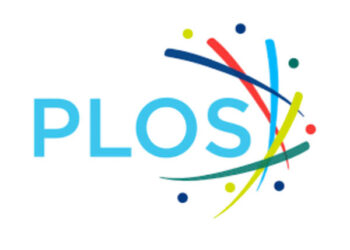
With Billy Idol playing on the jukebox, we contemplate the following scenarios:
- A publishing company is approached by a new IT services company. The IT company wishes to present a SAAS- or Cloud-based solution. It seems tailored to the publisher’s needs. The Executive Director of the publishing house asks senior members of her IT staff to meet with the new company. After the presentation, the in-house staff writes a report saying that the proposal should be turned down because the Cloud solution will require that the publisher give up a certain amount of control.
- The Board of a not-for-profit publishing organization becomes concerned about the many changes in the strategic environment and thus prompts the head of the organization to develop a strategic plan. The methodology chosen by the Executive Director is to ask each department to come up with a plan for how it wants to proceed in the future. The consolidated plan is then presented to the Board. Its gist is that the company should continue to do the same things as before, but that it should do them better.
- Having recruited a new CEO, the Board of this publishing company is surprised to hear from the new executive that the composition of the Board does not reflect the operating environment that the company must work in. The Board thus embarks on a review of its governance structure and composition. It concludes that the structure and composition are appropriate, but that management should provide a 15-minute environmental scan at each quarterly Board meeting.
As Billy Idol says,
Well there’s nothing to lose
And there’s nothing to prove
I’ll be dancing with myself
One of the differences between the way many organizations deal with tactical and strategic issues is that tactical issues are routinely exposed to the world outside the organization, but strategic issues rarely are. Thus, a publisher seeking a Web-hosting solution will, as a matter of course, prepare an RFP to be sent to a number of prospective vendors and will carefully evaluate each proposal before making a decision. That’s a good way to deal with a tactical matter of this kind. But as to the question of whether to seek a Web-hosting firm in the first place or to embark on a strategy of developing an internal solution — and what can be made of that solution — well, now the decision is made by a small group of insiders, who either have scant knowledge of the broader environment or who have a personal stake in the outcome of the decision.
It would be wrong to say that everyone is simply self-interested and that organizational life consists of little more than the clash of different interests, with the successful outcome being a function of the relative prowess of the belligerents. Self-interest plays a role, but it is not necessarily a deciding factor. The bigger obstacle to change and development in most organizations is more insidious; it is the fact that everyone believes that they are doing a good job. They are thus the right people to make the big decisions. And we should not be surprised to discover that those decisions support the very organizational structure and team that is already in place. Let’s continue to do the same job, but let’s do it better.
One form this organizational blindness takes is the tracking of the wrong metrics. By “wrong” I mean measurements that tend to support current activity without providing a different and perhaps unflattering perspective. A university press director proudly told me about his system of peer review, the number of outside reviewers, how carefully these reviews were themselves assessed, and how the reviews were used by authors to improve their books. Nice job. But the same director failed to note that sales of the press’s books had declined by more than a third in the past decade, and that financial support from the parent institution was wavering. “Have you considered the possibility that you are publishing the wrong books, that you are working in fields that are not growing and may even be declining,” I asked. He was taken aback by my question. After all, the peer review results said the press was doing a great job.
Examples of tracking the wrong things, or at least of failing to track some important things, can be found everywhere. I encountered one management team that boasted of their profit margins. But the same team had failed to adjust their sales reports for inflation. Thus, over a period of about 15 years, this team had in fact been putting the company through a long-term liquidation.
Or there is the Web site that proudly notes the number of users, but fails to measure the conversion rate, the metric for how many users actually conduct commerce on the site.
A librarian bragged about her commitment to open access and insisted that people would always value what libraries do in the way of indexing, aggregating, and preservation. But will universities continue to support those functions of libraries when content is available elsewhere at no cost? Yes, they would, she said, and she knew this from having polled her counterparts at other institutions. We admire the skill of the concert promoter — the appealing venue, the efficient ticketing systems, the amenities — but will we continue to value these things when the band does not play? The combination of Google plus open access will lead to the accelerating decline of institutional support for libraries. Now, what metric were you proposing?
It is a hard thing to take the calipers and place them on your own noggin. But you shouldn’t have to. That’s the the task of outsiders that are brought into an organization’s orbit — the independent director, for example, or the new hire who comes from an entirely different industry. Living and working in the face of different and shifting perspectives is a good thing. The real challenge is how to institutionalize a process that keeps these new perspectives coming, how to stop dancing with oneself and really begin to listen to the music.
Discussion
15 Thoughts on "Dancing with Myself — The Principal Impediment to Change and Innovation"
As a not so innocent bystander to the publishing industries self inflicted wounds over the last 30 years, I have to disagree strongly with Joe’s characterizations. In instance after instance the so called outside expert has influenced previously thriving society and association publishing operations to move to commercial companies with tremendous impact ultimately on the scholarly community. The loss of personal subscriptions, the gargantuan increases in prices to libraries, the impact factor race, and a host of other problems have enused. Sometimes external consultants work to reverse the effects of such decisions, othertimes they hasten the process. On net, I’ve seen loss of autonomy and precipitous pricing increases resulting from consultant led processes.
It would be a perverse honor if we consultants were responsible for the industry changes that you decry, but I think not. The fact is that change has a life of its own and an outside view is often useful when change comes calling. My case is rather extreme as I move from industry to industry pursuing complex issues. The challenge is to resolve issues efficiently lest they drag you under. But the consultant does not make the decisions.
Chuck, I think the question is what were the inputs that the libraries had when all this was going on?
Joe’s article “Dancing with Myself — The Principal Impediment to Change and Innovation” highlights a very persistent problem in the STM industry. Aligning the company’s strategy with the team’s goals, objectives and performance objective setting & reviews is not a new idea but unfortunately, many publishers have not invested the time and effort to do so. Let me preface that this problem is not unique to the STM industry. Recently I addressed a group of publishing executives at the annual CESSE meeting in Louisville, Ky this past July and I asked the audience of 20 publishers, how many of them had a strategy (8 answered yes). And for those who answered yes, I asked them how many of them have aligned their strategy to their goals and objectives and performance reviews. Only 2 answered yes. A couple of observations, first is that 12 of the publishers did not have a strategy and secondly, only 2 have aligned their strategy within their organization. A copy of my presentation is on slideshare http://slidesha.re/UagPbz.
How can we expect for our industry to embrace change and innovation when we are not focusing our limited and scarce resources on the very urgent and important strategic issues. What we have is a patient that has high blood pressure and continues to have a diet that includes all of the foods they should not eat. The patient is walking on a tight rope and their condition will get worse if they do not focus their time and attention strategically.
It is the responsibility of the CEO, Executive Director, Publisher, etc., to make sure that everyone from the board to the customer service representative is aware and aligned on the company’s strategy. Too often times the CEO / Exec Director pushes the responsibility down to the operating managers and they are not held accountable to report consistently to the CEO. By default the CEO’s report to the board is not complete.
As the STM industry has a number of challenges before it and if the industry is to take on these challenges effectively, the CEO’s will need to lead their respective organizations by driving the company’s strategic objectives throughout entire organization. This will ensure that everyone is on the same page and held accountable for their daily activities. Being innovative and changing the behavior of a company is a very challenging and daunting task but it is not an impossible task if the leaders of the organization look in the mirror and make a commitment to themselves and their team members to work to achieve greatness. If they involve everyone in the process then they will not be “Dancing with themselves”!
These are excellent points Darrell.
A contributing factor in many organizations/associations is often the leadership, and the long term members. When something has worked well for 20, 30, even 40 years, it is a difficult argument to make, especially to these groups, that change is necessary to the survival of the organization.
This is often coupled with a wariness of many individuals to be the instigator in a dramatic shift in how publishing is managed, and executed. In the end, it’s as though everyone has blinders on, and the result is an inability to to define proper metrics to measure success.
Great post, Joe. I have an observation and an anecdote to offer.
The observation is this: Beware the Bandwagon. Both insiders and consultants are prone to this, and I’d be willing to bet that is what happened in the cases Chuck refers to. It is very hard to step back and say “Wait a minute, I know everybody thinks this is the way to go, but is it really? For us? Right now?” While your post focuses on the very common situation where the insiders tend to support the status quo and the outside consultant’s role is to make sure they look outside that box, in my practice I frequently confront the opposite, where the insiders are hell bent on doing something because “everybody knows it is the thing to do” but it isn’t right for them. Buy a big CMS (before figuring out what it needs to do, exactly). Use XYZ DTD/Schema (because everybody else like us uses that one). Implement XML First (whatever that means.) Beware the Bandwagon.
But now an anecdote that confirms your observation — which I think is absolutely critical — that it is all about measuring the right thing, the right way. One of my clients (years ago; don’t even try to guess who this might have been) had a problem with a burgeoning backlog in what they were doing. The department that was charged with processing X things per month always processed X+ things per month and was very proud of their fantastic performance. What I discovered they were doing was processing the X+ easy things but shoving all the hard things into a we’ll-have-to-deal-with-that-later queue. Well, not a queue, as it turned out, but an ever-growing pile. Since they spent 100% of their time successfully exceeding their arbitrary numerical goal every month, they pretty much _never_ got to those backlogged items, some of which had been sitting in the backlog for over a year. But their metrics told them — and their management — that they were doing a wonderful job.
So true. Folks making publications and books got used to ongoing disruption when they began capturing keystrokes and using modems. Disruption and discomfort around Marketing and Sales and Distribution is different. Folks think they have less control when they have to learn and apply and gain comfort w new strategy. Sooner or later it becomes more predictable again, even if the cycles are accelerated and sales are less automatic in a way they may have been previously.
As Joe well knows, some publishers operate more independently than others. Take university presses. Princeton, where I spent the first half of my publisher career, was a corporation separately chartered from the university, and as such it ran its own show without having to take orders from anyone in the university; the only formal connection was through the faculty editorial board, which controlled the use of the university’s imprint, and had to approve every book published. By contrast, Penn State, where I spent the second half, was a unit of the university reporting, initially, to the VP for Research and then, later, to the Dean of Libraries. The strategic plans for those two parts of the university were quite different, and the press had no choice but to integrate its plan with whatever superior unit it reported to. Thus, for example, the benchmarking was done in reference to different universities in each unit. But even benchmarking to the CIC (Big Ten plus Chicago) did not make a lot of sense for the press since the CIC presses differed so much among themselves. Comparing Penn State with Michigan might make sense, but not comparing Penn State with Chicago (a vastly larger press) or Iowa (a much smaller, literary-oriented press). Many more examples could be given of how a university press in this kind of environment is constrained or abetted in its choices. E.g., the press had to set up a web site outside the university’s domain name because the university’s IT office was not used to conducting e-commerce and could not process secure credit card orders. On the other hand, the press saved money by hiring staff copyeditors rather than free-lancing that work because the press was not charged the cost of benefits for those employees. So, it does not always matter what a university press might think it best to do purely as a publishing company; what matters is that any decision it makes is subject to constraints and conditions imposed by the university’s own structure, procedures, and requirements. Outside consultants often do not understand this situation, so make recommendations that, in an ideal world, might seem fine but, in the kind of weird world university presses inhabit, might not make sense at all.
Indeed Sandy, every org is different and this is the biggest challenge a consultant faces, also the most fun. My typical gig is about 18 months for just this reason. By the same token no two consultants are alike so it is important to find a fit. I tend to be a trouble shooter so complacency is seldom my problem, nor is strategic planning. By the time I get there the org knows it has a specific complex issue on is hands. OA for example. But then I am so old that my first consulting problem was “why aren’t our engineers using this new thing the computer?” That was 1972. Still at it.
The mysterious picture caption above (“The character’s look has been compared with rock musician Billy Idol (pictured)”) explained.
As so often, Buffy the Vampire Slayer holds the answers.
This sounds like centralization which later may lead to the big Fish giants in media swallowing the little fish aka (small business owners and publishers) Wow, we will NOT drink the Kool-Aid. America is being taken over agricultural, socially, politically and economically creating the perfect storm for centralized future one world ruling by the select few who later will collapse what really created the BEST and most efficient economy of the world The United States of America. Lets not forget that it was individuals striving to promote that which they liked and honored which later was selected via honest competition and good quality. I worry for 95% of all existing media is more like controlled media by special interests attempting to spread disinformation and Kool-Aid fake solutions to later control all as in a communist like setting.
Insightful, and better than the typical contrarian/in-your-face sort of view. My takeaway: when you bring in a good, insightful consultant or outsource a project to a well-rounded, thoughtful team, their “calipers on your noggin” are an extra bonus; a deliverable that might not be in the contract, but one you’ll be glad to have.



